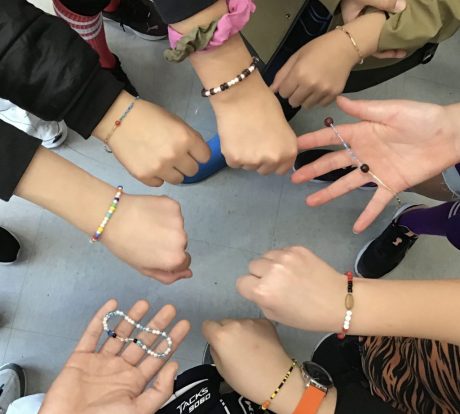Students have been exploring how to write numbers in binary code. Binary is a base-2 number system that is the foundation for machine commands. Each bit in this 6-bit series below can be turned either “on” or “off” in order to represent a value. When a bit is “on” it is represented with a 1, and when it is “off” it is represented with a 0. For example, in order to write the number 10 in binary, we would write 001010. The two 1s appear in the places of 8 and 2, so 8+2=10.

What is the largest number you can make with 6-bits? How would you represent the number 24?
Division 3–Have you noticed the strange addition sentence sticker on my laptop? Have a look the next time you’re here and see if you can solve it! (Hint: it has something to do with binary!)

This week students learned that letters can also be coded in binary using the ASCII alphabet. Each uppercase and lowercase letter can be represented by a decimal number that is translated into an 8-bit binary code. Students mapped out their the letters of their names on grid paper, chose their colours, and beaded their names into a bracelet. They used a different coloured bead as a delimiter to separate each 8-bit letter.
Here is a message for you, Division 3. Let’s see if you can decode it!
1001000 1000001 1010000 1010000 1011001 01000011 01001111 01000100 01001001 01001110 01000111